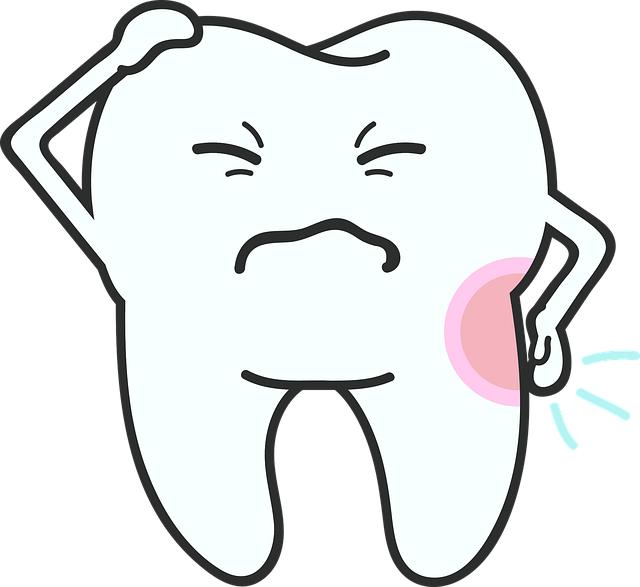Table of Contents
- Understanding Food Sensitivity Tests and Their Importance in Your Health Journey
- Common Food Sensitivities and Their Symptoms
- Choosing the Right Food Sensitivity Test for You
- Interpreting Your Test Results: What They Really Mean
- Integrating Dietary Changes: Practical Tips for Managing Food Sensitivities
- Q&A
- In Summary


Understanding Food Sensitivity Tests and Their Importance in Your Health Journey
Food sensitivity tests are becoming increasingly popular among those who seek to improve their overall well-being. Unlike traditional allergy tests, which identify immediate allergic reactions, these tests focus on delayed reactions that may occur hours or even days after consuming certain foods. Understanding the nuances of these tests can shed light on potential culprits behind unexplained digestive issues, fatigue, or chronic inflammation. By pinpointing food sensitivities, you can make informed dietary choices that lead to a healthier lifestyle.
There are various methods available for testing food sensitivities, each with its unique approach. Common testing methods include:
- ELISA (Enzyme-Linked Immunosorbent Assay): A blood test that detects specific antibodies.
- IgG Testing: Measures immunoglobulin G (IgG) antibodies related to food proteins.
- Elimination Diets: Involves removing potential trigger foods from your diet for several weeks and gradually reintroducing them.
While food sensitivity tests can provide valuable insights, it’s crucial to remember that they should be interpreted in conjunction with clinical symptoms and medical history. Consulting with healthcare professionals can help ensure a comprehensive understanding of your results. As you embark on this journey, consider keeping a food diary to correlate symptoms with specific food intake, enhancing your ability to identify trends and make lasting dietary adjustments.
To maximize the benefits of understanding your food sensitivities, consider developing a balanced meal plan based on your test results. Here’s a simple template to guide you in creating meals that cater to your unique needs:
| Food Group | Recommended Foods | Avoid These Foods |
|---|---|---|
| Grains | Quinoa, Brown Rice | Wheat, Barley |
| Dairy | Almond Milk, Coconut Yogurt | Cow’s Milk, Cheese |
| Proteins | Chicken, Lentils | Eggs, Seafood |
By remaining attentive to your body’s responses and adapting your eating patterns, you pave the way for a healthier, more energized life.


Common Food Sensitivities and Their Symptoms
Understanding food sensitivities is crucial for those who experience unexplained discomfort after eating. Common triggers include gluten, dairy, soy, and nuts, each capable of eliciting a range of adverse reactions. For instance, individuals sensitive to gluten might face symptoms like bloating, fatigue, or digestive irregularities. Conversely, those with a dairy sensitivity may suffer from abdominal pain, gas, or skin reactions. By identifying these sensitivities, one can make informed dietary choices to alleviate discomfort.
Other prevalent sensitivities include soy and certain nuts. Soy is often hidden in various processed foods, making it a common culprit. Symptoms of soy sensitivity can manifest as headaches, nausea, or respiratory issues. Tree nuts, essential in many diets for their health benefits, can pose risks for those sensitive to them. Reactions may range from mild irritation to severe anaphylaxis. Recognizing these triggers empowers individuals to avoid foods that could lead to adverse health consequences.
| Food Sensitivity | Common Symptoms |
|---|---|
| Gluten | Bloating, fatigue, digestive issues |
| Dairy | Abdominal pain, gas, skin reactions |
| Soy | Headaches, nausea, respiratory problems |
| Nuts | Irritation, anaphylaxis |


Choosing the Right Food Sensitivity Test for You
When it comes to identifying food sensitivities, not all tests are created equal. Understanding the different types available can help you make an informed decision tailored to your unique needs. Here are some common types of food sensitivity tests you may consider:
- Igg Testing: Measures the immune response to specific foods. It’s one of the most popular options, as it helps identify long-term sensitivities.
- IgE Testing: Primarily used for allergy testing, this test measures immediate reactions to certain foods, making it crucial for those with severe allergies.
- Elimination Diets: A more traditional method that involves removing common trigger foods from your diet, then reintroducing them one at a time to pinpoint sensitivities.
When selecting a test, consider your symptoms and health goals. For instance, if you experience digestive issues, an IgG test might provide insight into your body’s long-term reactions. Alternatively, if you’re dealing with immediate allergic reactions, IgE testing may be the way to go. Consult with a healthcare provider to understand which method aligns best with your specific health situation. Look for tests that are:
- Clinically validated: Ensure the test is backed by scientific research.
- Offered by reputable laboratories: Choose a facility that has a good track record and is transparent about their processes.
- Comprehensive: Opt for tests that cover a wide array of potential food sensitivities.
consider the practical aspects of taking a food sensitivity test. Timing, cost, and required preparations can vary significantly. For instance, some tests may necessitate that you consume potential trigger foods before testing, while others require fasting. Understanding these nuances will help you plan better and set realistic expectations. Here’s a quick comparison table to help clarify the differences:
| Test Type | What it Tests | Best For |
|---|---|---|
| IgG Testing | Delayed immune reactions to foods | Food sensitivity identification |
| IgE Testing | Immediate allergic reactions | Severe food allergies |
| Elimination Diet | Overall food sensitivities | Personalized discovery |


Interpreting Your Test Results: What They Really Mean
When you receive the results from your food sensitivity test, it’s essential to consider them in context rather than viewing them in isolation. Your results may show a variety of reactions to different foods, which can often be categorized into three main types: IgG reactions, IgE reactions, and non-immune reactions. Each type indicates a different mechanism in how your body interacts with certain food proteins.
Understanding these reactions can help you create a personalized dietary plan. Here are some potential implications for each type of reaction:
- IgG reactions: These are often delayed responses and may indicate foods you consume frequently. Symptoms might include bloating or headaches after several hours or even days.
- IgE reactions: These are usually immediate and can result in more severe reactions, such as hives or anaphylaxis. Foods triggering these reactions often need to be strictly avoided.
- Non-immune reactions: These can involve intolerance to certain foods, such as lactose in dairy, and may not involve the immune system at all.
As you interpret your results, it’s also beneficial to consider the food elimination and challenge process. This involves removing the identified sensitivities from your diet for a period—generally 4 to 6 weeks—and then gradually reintroducing them. This method helps pinpoint specific triggers effectively. Below is a simplified table for reference:
| Food Type | Reaction Type | Potential Symptoms |
|---|---|---|
| Dairy | IgG | Bloating, Fatigue |
| Peanuts | IgE | Hives, Anaphylaxis |
| Gluten | Non-immune | Gas, Diarrhea |
As you analyze your test results, integrating the findings with your personal health history and lifestyle habits will empower you to make informed dietary changes. Consult with a healthcare professional to discuss your symptoms and ensure a comprehensive and balanced approach to managing food sensitivities.


Integrating Dietary Changes: Practical Tips for Managing Food Sensitivities
When adjusting to new dietary guidelines, especially in the wake of discovering food sensitivities, it’s crucial to create a plan that feels achievable rather than overwhelming. Start by eliminating trigger foods for a few weeks to give your body a chance to heal. During this time, focus on incorporating naturally occurring whole foods into your diet. For example, consider adding:
- Fruits and Vegetables: Aim for a colorful variety to maximize nutrient intake.
- Whole Grains: Elements like quinoa, brown rice, or gluten-free oats can provide essential fibers.
- Healthy Fats: Integrate avocados, nuts, and olive oil as beneficial sources of fat.
After the elimination phase, it’s essential to reintroduce foods one at a time. This method not only helps identify specific sensitivities but also broadens your dietary choices. While documenting your experiences is valuable, keep in mind which symptoms arise with each reintroduction. Use a simple table to track your findings:
| Food Item | Date Introduced | Symptoms Noted |
|---|---|---|
| Wheat | MM/DD/YYYY | Bloating, Fatigue |
| Dairy | MM/DD/YYYY | Rash, Digestive Issues |
| Eggs | MM/DD/YYYY | No Symptoms |
foster a supportive environment to maintain your dietary changes successfully. Seek guidance from nutritionists or join support groups dedicated to food sensitivities. Preparing meals in advance can also reduce the temptation to revert to trigger foods, allowing you to navigate social settings and dining out with greater ease. Remember, maintaining balance and listening to your body’s responses is fundamental as you embrace these dietary changes.




0 Comments